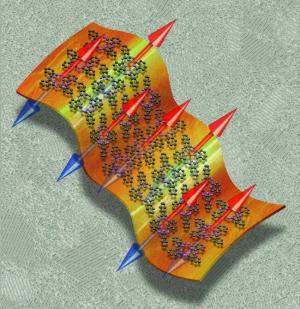Copper pthalocyanine (CuPc) may prove to be a useful spintronics material
Researchers from UK's London Center of Nanotechnology and Harvard University studied copper pthalocyanine (CuPc) to be used as a spintronics material, and it turns out that this may be a very suitable spintronics material.

The researchers fabricated a thin CuPc film on a substrate. This film contains copper atoms surrounded by nitrogen atoms and rings of carbon. Using a magnetic resonance spectrometer that generates short pulses of microwaves to create a magnetic field that aligned the electron spins. They discovered that electrons retained their spin for a long time - at 5 degrees Kelvin, the spins stayed parallel to the field for 59 milliseconds, and the superposed state lasted 2.6 milliseconds. Raising the temperature decreased those times.